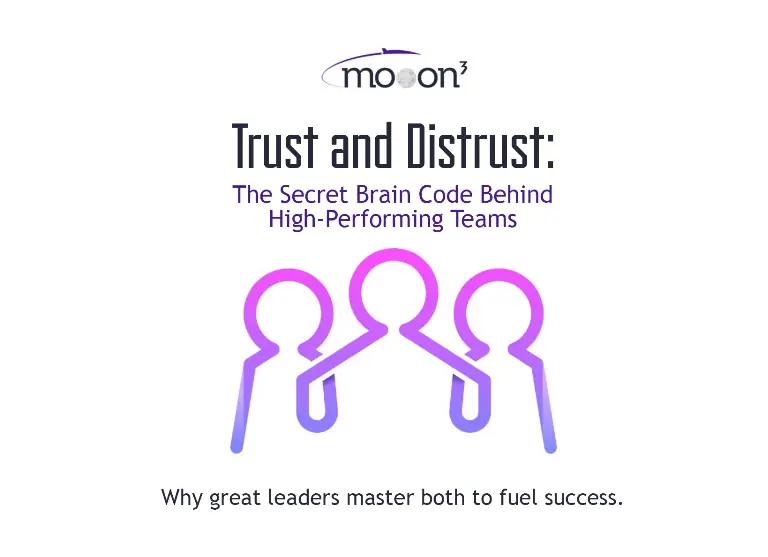In leadership, understanding the balance between trust and distrust is crucial for fostering high performance. Neuroscience reveals that these are not merely opposite ends of a spectrum but distinct processes that can coexist within teams and organizations. Achieving balanced trust—a state where both trust and distrust are appropriately addressed—can significantly impact team dynamics and outcomes.

The Neuroscience of Trust and Distrust
Trust and distrust activate different neural pathways, each influencing behavior and decision-making:
Trust: Engages the prefrontal cortex, particularly the medial and ventromedial regions, which are associated with social decision-making, emotional regulation, and value-based judgments.
Distrust: Activates the amygdala and anterior insula, regions linked to threat detection and risk aversion, leading to heightened caution and defensive behaviors.
These circuits operate independently, allowing individuals to trust someone’s skills while simultaneously questioning their motives—or vice versa. This distinction underscores the need for leaders to address both dimensions to foster a high-performing team.
Balanced Trust: Navigating the Spectrum
Achieving balanced trust involves recognizing and managing both trust and distrust within a team. This balance creates an environment where team members feel secure, knowing they can rely on each other without undue concern. In neuroscientific terms, this state reduces activation of the brain’s threat detection centers, such as the amygdala, thereby lowering stress levels and promoting a sense of safety. Consider the analogy of preparing a car for a journey:
-
- Trust and Distrust as Maintenance: Ensuring the car’s brakes and engine are in optimal condition provides peace of mind, allowing you to sleep well at night, knowing the vehicle will be safe tomorrow on your trip.
- Purpose as Fuel: However, to embark on a trip or enter a race, the car needs fuel. Similarly, in the workplace, while balanced trust establishes a secure foundation, it is purpose that energizes and propels the team toward achieving goals.
Purpose: Fueling High Performance
While balanced trust establishes a foundation of safety and reliability, it is purpose that ignites passion and drives exceptional performance within teams. Purpose serves as the intrinsic motivator that propels individuals beyond mere compliance, inspiring them to pursue excellence and innovation. To cultivate a complete sense of purpose among employees, leaders should focus on the following key factors:
-
- Manageable Tasks: Assigning tasks that are challenging yet attainable prevents overwhelm and promotes a state of flow, leading to higher satisfaction.
- Relevance to Personal Growth & Interest: Ensuring that work tasks contribute to an individual’s professional development enhances their engagement and commitment.
- Clarity of Task: Clearly defined roles and expectations enable employees to understand their contributions to organizational goals, fostering a sense of ownership.
Strategies for Leaders to Cultivate Purpose Using the MRC Framework
To harness the power of purpose, leaders can implement the following strategies:
-
- Articulate a Clear Vision: Communicate the organization’s mission and how each team member’s role contributes to overarching objectives.
- Align Individual and Organizational Goals: Ensure that employees’ personal values and career aspirations resonate with the company’s purpose, fostering a deeper connection to their work.
- Recognize and Celebrate Contributions: Acknowledge achievements and demonstrate how individual efforts make a meaningful impact, reinforcing the significance of their work.
- Provide Opportunities for Growth: Offer avenues for professional development that align with both personal purpose and organizational needs, enhancing engagement and satisfaction.
Conclusion
In summary, while balanced trust creates a secure environment where team members feel confident in relying on each other, it is the infusion of purpose that transforms this stability into dynamic performance. By understanding and leveraging the MRC framework—Manageable tasks, Relevance to personal growth, and Clarity of task—leaders can cultivate teams that are not only competent and reliable but also passionately driven toward shared goals. This holistic approach ensures that organizations thrive, adapting to challenges with resilience and achieving sustained success.

